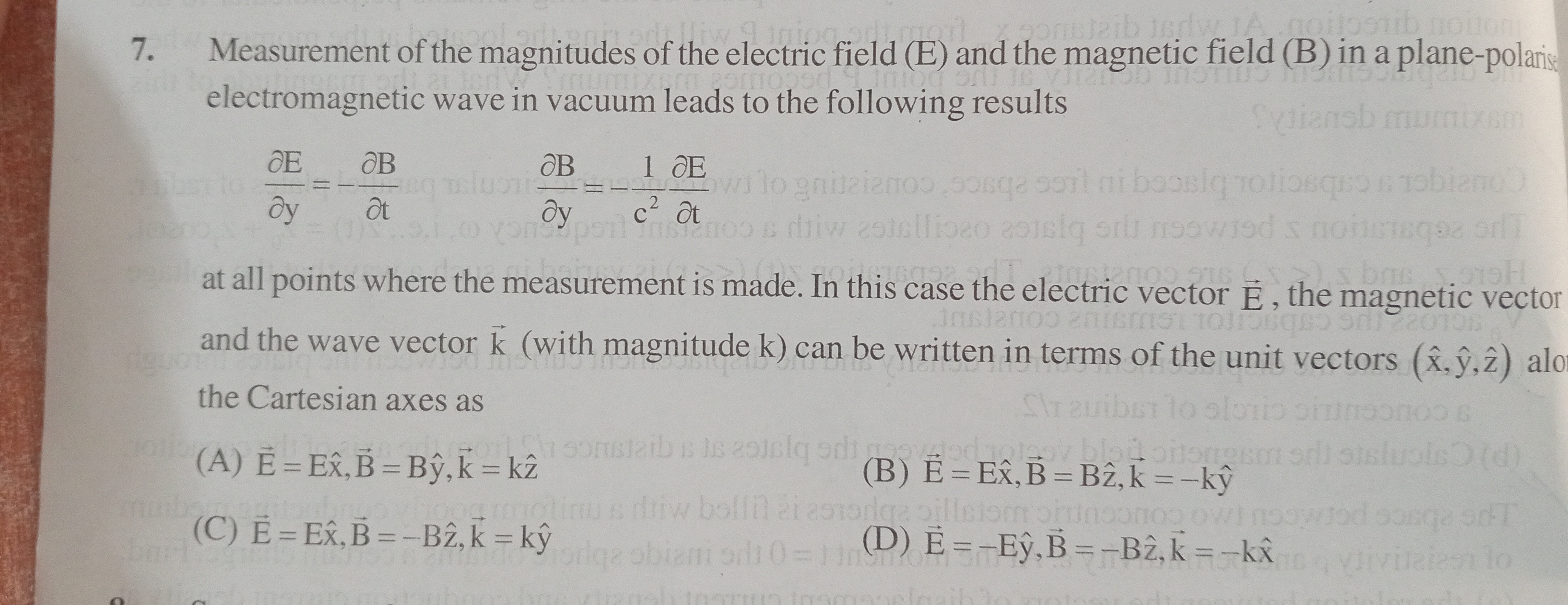Question
Question: Measurement of the magnitudes of the electric field (E) and the magnetic field (B) in a plane-polari...
Measurement of the magnitudes of the electric field (E) and the magnetic field (B) in a plane-polarise electromagnetic wave in vacuum leads to the following results
∂y∂E=−∂t∂B
∂y∂B=−c21∂t∂E
at all points where the measurement is made. In this case the electric vector E, the magnetic vector B and the wave vector k (with magnitude k) can be written in terms of the unit vectors (x^,y^,z^) along the Cartesian axes as

E=Ex^,B=By^,k=kz^
E=Ex^,B=Bz^,k=−ky^
E=Ex^,B=−Bz^,k=ky^
E=−Ey^,B=−Bz^,k=−kx^
(C)
Solution
The given equations are component forms of Maxwell's equations for an electromagnetic wave in vacuum. We test the given options to find the consistent configuration of the electric field E, magnetic field B, and wave vector k. For a plane wave propagating in the direction k, E and B are perpendicular to k and to each other, and E×B is in the direction of k. The wave dependence is on (k⋅r−ωt). The given equations involve derivatives with respect to y and t, indicating that the wave depends on y and t. This means the wave vector k must have a component along the y-axis. Options (A) and (D) have k along z^ and x^ respectively, which are inconsistent. We test option (C) where k=ky^, E=Ex^, and B=−Bz^. Assuming a wave form like cos(ky−ωt) and using the relation E0=cB0 and ω=ck, we substitute the components Ex=E0cos(ky−ωt) and Bz=−B0cos(ky−ωt) into the given equations. Both equations are satisfied. Also, the direction of propagation k=ky^ is consistent with the direction of E×B=(Ex^)×(−Bz^)=EBy^. Option (B) with k=−ky^, E=Ex^, B=Bz^ is found to be inconsistent with the given equations.
